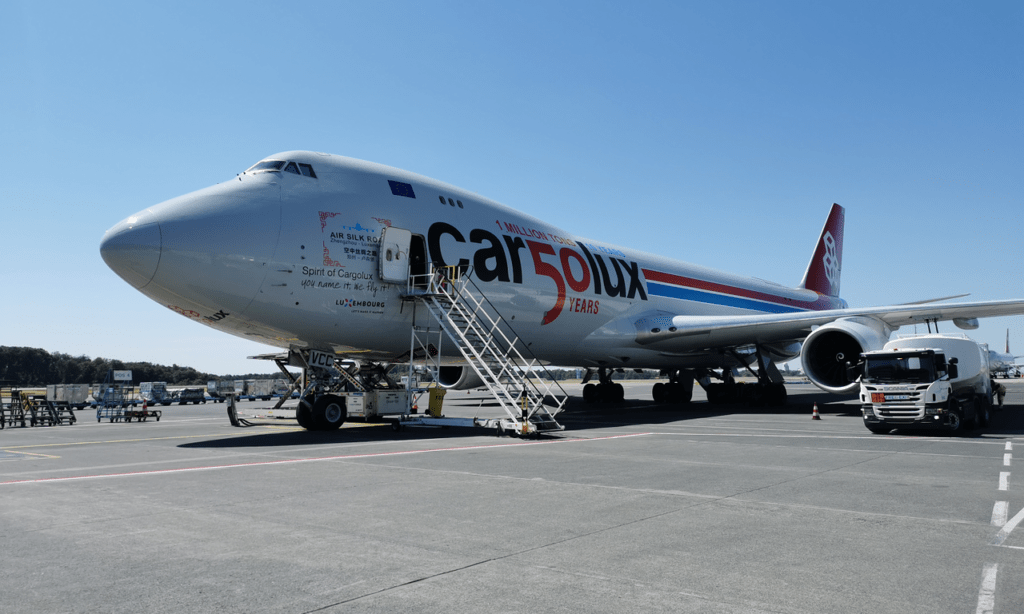The International Air Transport Association (IATA) released data for August 2023 global air cargo markets, showing that year-on-year air cargo demand grew for the first time in 19 months.
August brings some optimism
The aviation industry, like many others, faced unprecedented challenges in the wake of the COVID-19 pandemic.
Air cargo, a critical component of the global supply chain, experienced a prolonged slump. However, the August 2023 data brings some much-needed optimism.
According to IATA, global demand for air cargo, measured in cargo tonne-kilometers (CTKs), increased by 1.5% compared to August 2022.
When focusing on international operations, this growth rate rose to an impressive 2%. This upward trajectory suggests that the industry is on the path to recovery.

[monsterinsights_popular_posts_inline]
Capacity Expansion: A Key Driver
Capacity, measured in available cargo tonne-kilometers (ACTKs), also played a pivotal role in this resurgence. In August 2023, available capacity increased by a substantial 12.2% compared to the previous year, with international operations witnessing an 8% growth.
This increase in capacity can be attributed primarily to the rise in belly capacity, which surged by an astonishing 30% year-on-year.
Airlines across the globe ramped up their operations to cater to the peak-northern summer travel season.
This surge in capacity not only met the growing demand but also indicated a renewed confidence in the industry’s prospects.
Analyzing the Operating Environment
To fully understand the dynamics behind this resurgence, it’s crucial to examine the operating environment. Several factors stand out:
Manufacturing Output and Export Orders
In August, both the manufacturing output Purchasing Managers Index (PMI) and new export orders PMI showed slight improvements compared to the previous month.
However, they remained below the critical threshold of 50, indicating a continued annual decline in global manufacturing production and exports. While the improvements are welcome, they signal a slower recovery.
Global Cross-Border Trade
July witnessed the fourth consecutive month of global cross-border trade contraction, with a 3.2% year-over-year decrease.
This reflects the cooling demand environment and prevailing macroeconomic conditions. The path to a full recovery remains uncertain.
Inflation Trends
In August, inflation exhibited mixed trends across different regions. While the United States saw an increase in consumer prices for the second consecutive month, Europe and Japan experienced a decline in both consumer and producer prices.
China, on the other hand, grappled with deflationary pressures as consumer prices rose. These varying inflation trends add to the complexity of the recovery landscape.

Willie Walsh, IATA’s Director General, acknowledged the significance of the 1.5% growth in air cargo demand. He highlighted that although this growth is off a low base from 2022, there is room for optimism.
Market signals are mixed, but the movement of PMI data towards positive territory is promising. As the industry approaches the traditional peak year-end season, there is hope for further recovery.
Regional Performance
Understanding regional variations is essential in gauging the industry’s recovery comprehensively:
Asia-Pacific
In August 2023, Asia-Pacific airlines saw a 4.9% increase in air cargo volumes compared to the same month in 2022. This marked a significant improvement from the previous month’s 2.3% growth.
Carriers in the region benefited from growth on major trade lanes, such as Europe-Asia and Middle East-Asia. The availability of more belly capacity from the passenger side of the business contributed to this growth.
North America
North American carriers witnessed a slight decline of 1.2% in air cargo volumes, an improvement from July’s -5.4%.
Growth on trade lanes like North America – Europe and Asia – North America showed signs of improvement. Capacity increased by 2.7% compared to August 2022.
Europe
European carriers saw a marginal decline of 0.2% in air cargo volumes in August, an improvement from July’s -1.0%.
The Europe–Asia trade lane performed well, and there was a small increase in the Middle East – Europe markets. Capacity increased by 3.6% year-on-year.
Middle East
Middle Eastern carriers experienced a 1.4% year-on-year increase in cargo volumes in August 2023, an improvement from the previous month.
The Middle East–Asia market witnessed a positive trend in the past three months, with expanding year-on-year growth. Capacity increased significantly by 15.7%.
Latin America
Latin American carriers exhibited the strongest performance, with a remarkable 6.2% increase in cargo volumes compared to August 2022.
This significant growth was a welcome change from the previous month. Capacity also saw a substantial increase of 13.7%.
Africa
African airlines faced challenges, with a 4.7% decline in cargo volumes compared to August 2022, a notable decrease from July. Africa–Asia routes, which showed growth in July, declined in August. Capacity remained 3.8% above August 2022 levels.

Click the banner to subscribe to our weekly newsleter.









